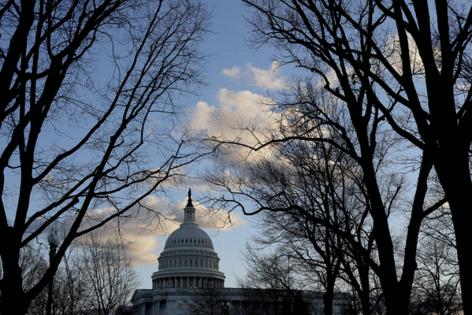How common is unified government? What to know after GOP won Congress and White House
Published in News & Features
Republicans are poised to control both chambers of Congress and the White House, putting the U.S. on course for unified government — which is common in American politics.
On Monday, Decision Desk HQ projected that the GOP would win at least 219 seats in the House of Representatives, allowing it to retain command of the chamber. And, according to The Associated Press, which has called fewer races, Republicans are just four seats shy of a majority.
The results come days after Republicans were forecast to win 52 seats in the Senate, flipping the chamber from Democratic control, and after President-elect Donald Trump defeated Vice President Kamala Harris to win the presidential election.
With this trifecta of control, Republicans, led by Trump, are set to have broad authority to enact their agenda over the next two years — which is often the case with new administrations.
In fact, over the past century and a half, single-party control of both chambers of Congress and the White House has been more common than not — though it is often short-lived.
History of unified government
The federal government has been unified 48 times — for a total of nearly 100 years — since 1857, according to House records. In contrast, it’s been divided 38 times.
Throughout the early and middle of the 20th century, in particular, single-party control was extremely common.
For example, there was an unbroken streak of unified government from 1933 to 1947 — during the presidencies of Franklin Roosevelt and Harry Truman.
Similarly, between 1961 and 1969 — during the presidencies of John Kennedy and Lyndon Johnson — there was continuous unified government.
However, in recent decades, there has been a shift.
“Since the 1970s, divided government has been more common than not,” Joshua Huder, a senior fellow at Georgetown University’s Government Affairs Institute, told McClatchy News.
“Presidents typically win unified government after their first election. But more often than not they lose it quickly,” Huder said. “Outside of a brief period of unified control, congressional majorities flip and power is once again divided.”
For example, Presidents Barack Obama, Donald Trump and Joe Biden all came into office with a unified government before it became divided two years later.
What to expect from unified government
“Under unified government, we typically see more legislation passed than under divided government,” Huder said.
This was the case for the Obama, Trump and Biden administrations, which saw the largest amount of legislation — including signature bills like the Affordable Care Act and the Tax Cuts and Jobs Act — passed during their first two years, according to Statista.
Huber added that unified governments with slim majorities tend to pass less legislation than those with strong majorities.
Since the Republican majorities in the Senate and the House are on track to be slim (a few races have yet to be called), the party could face challenges in enacting sweeping legislation.
“Passing major legislation will be difficult with so few votes to lose,” Huber said. “I expect the next Congress to be more productive than the current Congress but slim majorities may hamper its policy output.”
_____
©2024 The Charlotte Observer. Visit charlotteobserver.com. Distributed by Tribune Content Agency, LLC.







Comments